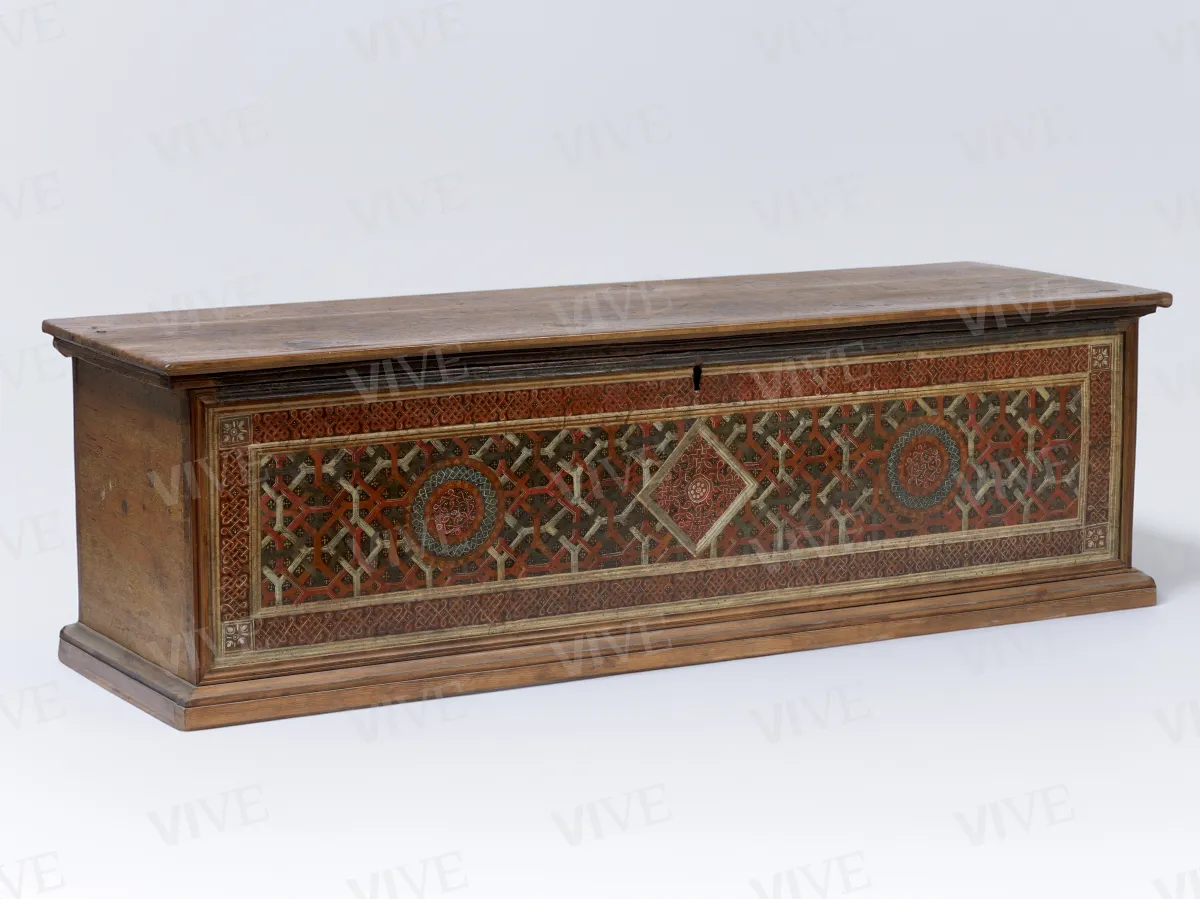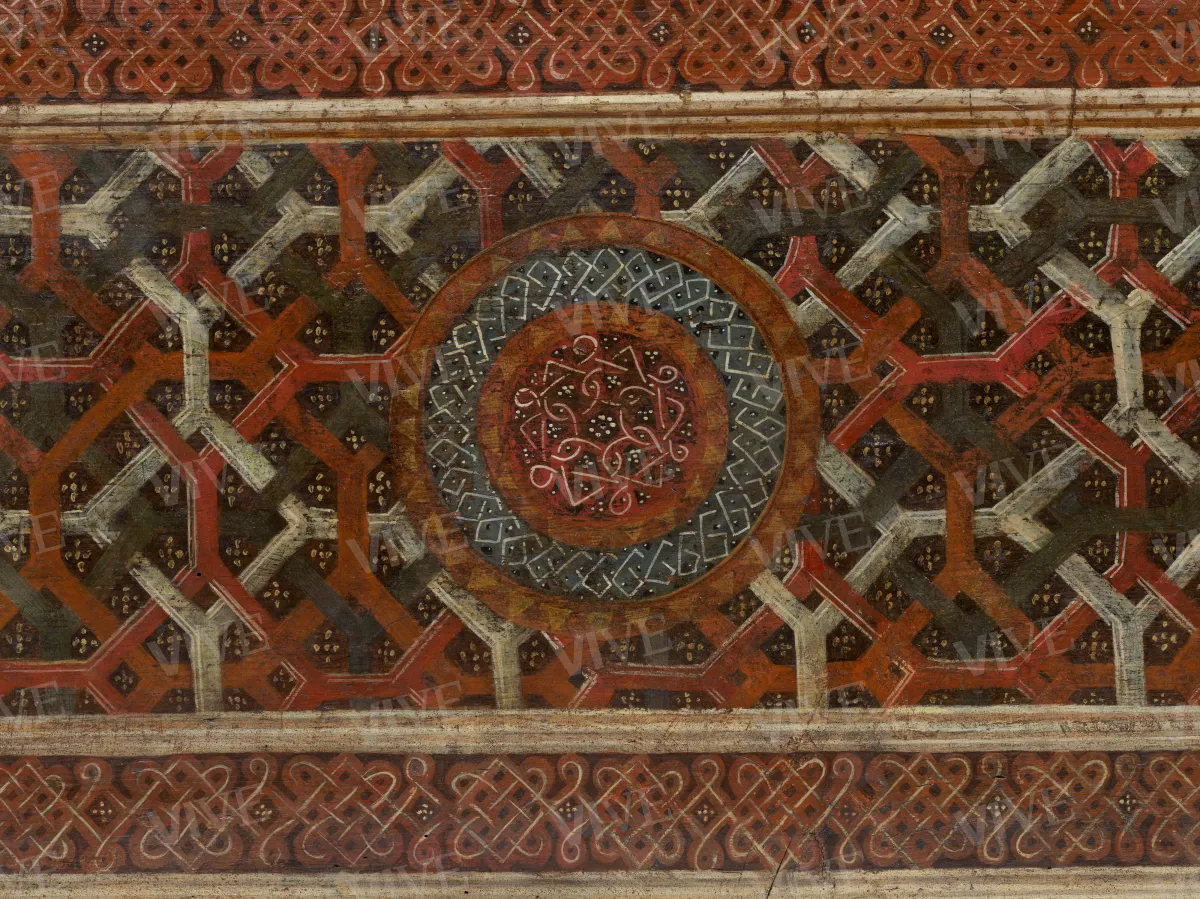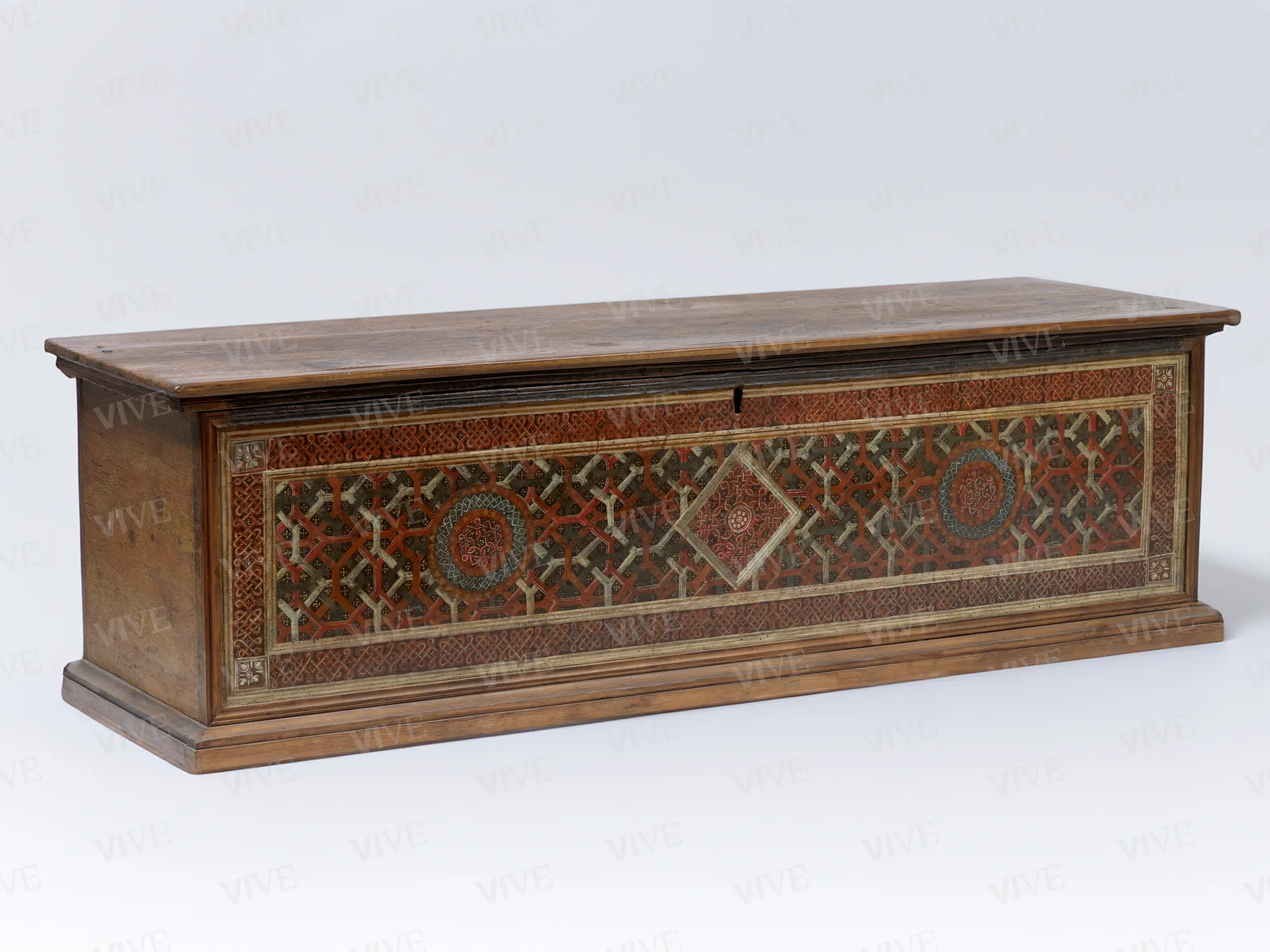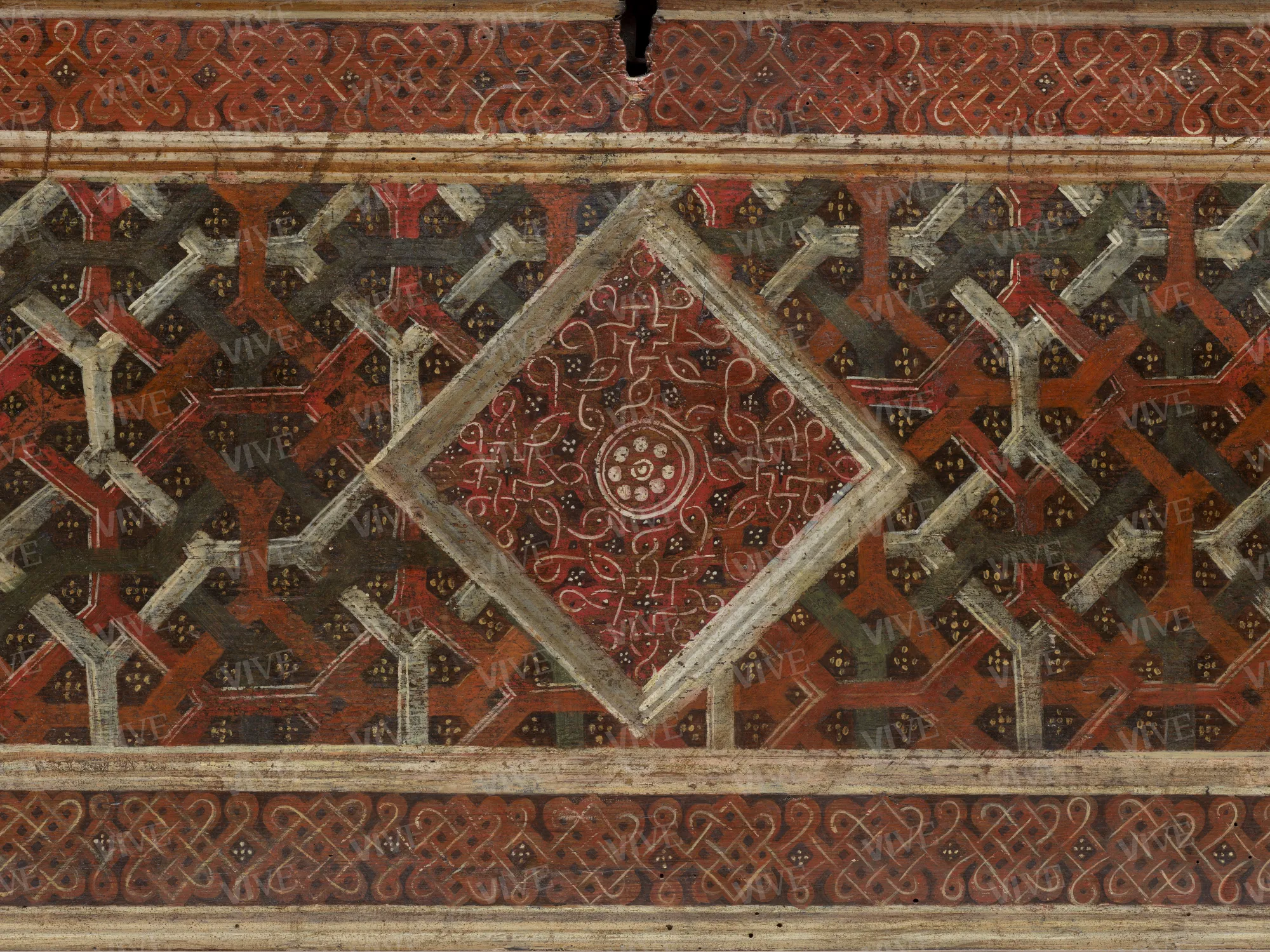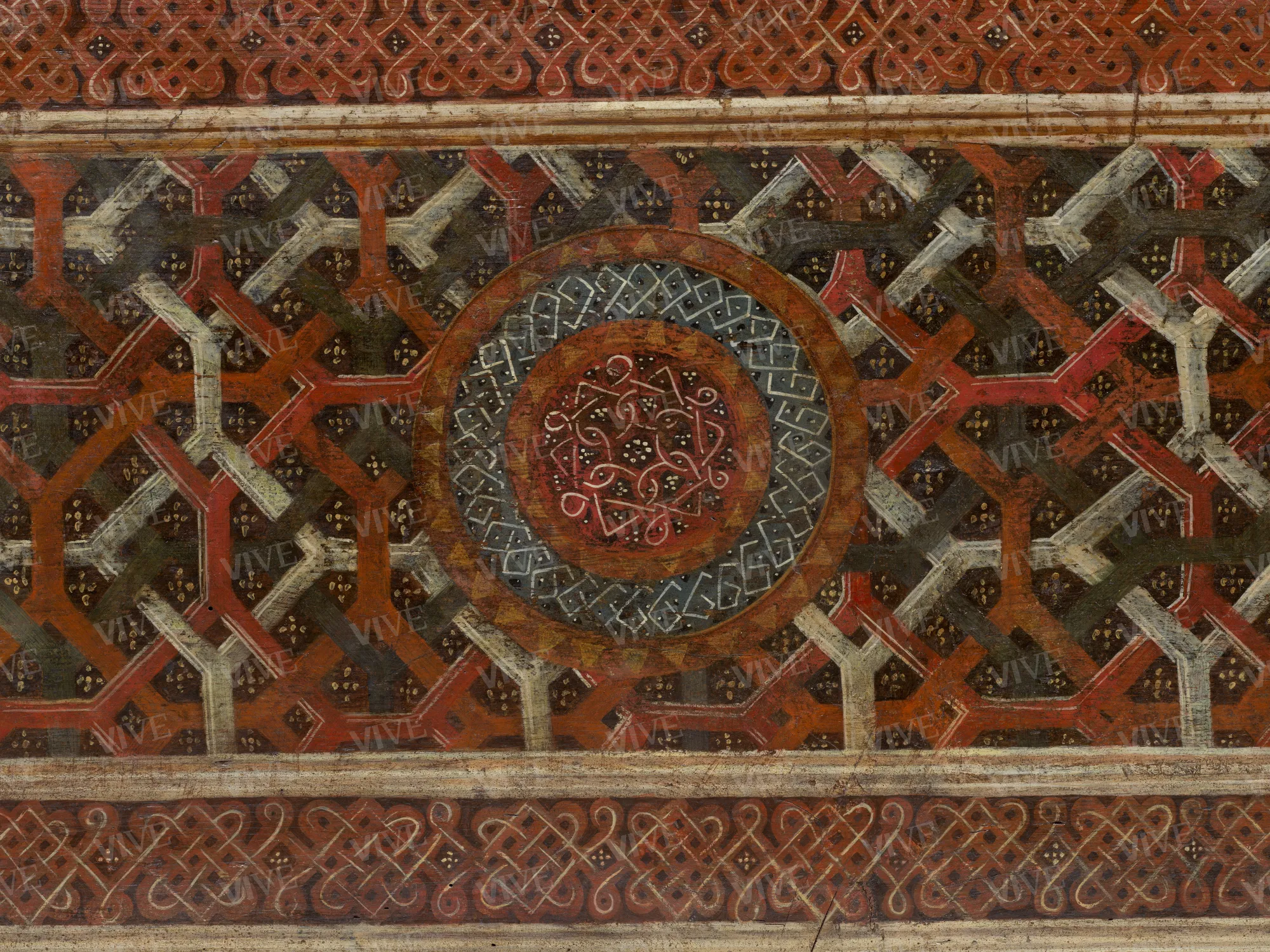Cassone
Lombard milieu 1490-1499
This cassone features a painted front adorned with interlaced, knotted decorations. Initially associated with similar works by Leonardo da Vinci and his contemporaries, suggesting origins in the Lombardy region towards the end of the fifteenth century, this decorative approach should instead be attributed to the contemporary designs used for embroidery and chiseling. These designs were prevalent and influenced ornamental choices in various everyday objects, including furniture.
This cassone features a painted front adorned with interlaced, knotted decorations. Initially associated with similar works by Leonardo da Vinci and his contemporaries, suggesting origins in the Lombardy region towards the end of the fifteenth century, this decorative approach should instead be attributed to the contemporary designs used for embroidery and chiseling. These designs were prevalent and influenced ornamental choices in various everyday objects, including furniture.
Details of work
Catalog entry
The cassone, in its natural state, has only the front painted. The decoration includes a bordered frame with a weave motif and square tiles with stylized rosettes in the corners. The inner field features a background with intersecting nets formed by linked octagons and squares in three different colors (red, white, and ochre) over a dark dotted background. The center houses a lozenge flanked by two roundels with thin triangular borders, containing knot motifs. The wood shows signs of restoration and reinforcement, and the color has been consolidated in several areas.
Purchased in 1919 in Florence by the antiquarian and collector Achille De Clemente who believed it to be a late-fifteenth-century Tuscan work, the cassone was later attributed to the Lombard sphere upon its arrival at the Palazzo Venezia Museum. The decoration on the cassone was linked to similar subjects (knots and intertwining) studied by Leonardo da Vinci and his circle, which are represented in known engravings found in the Biblioteca Ambrosiana in Milan with the motto “Academia Leonardi Vi[n]ci” (Hermanin 1948; Massafra 1983), and also in similar works referred to Albrecht Dürer (The Illustrated Bartsch 1981). These motifs likely derive from sources related to embroidery or chiseling. Francesco Malaguzzi Valeri (1915) noted that these same motifs appear in an embroidered stole in the Museo del Santuario in Varese. It is possible that the front treatment of this cassone was intended to create the illusion that the piece was covered with a rug, in keeping with a practice attested at the time for similar objects. However, such motifs were not limited to Lombardy, as a similar design can also be found on the front of the pedestal of the throne for the Madonna and Child in the altarpiece executed by Perugino for the church of Sant’Agostino in Cremona.
Lorenzo Mascheretti
State of conservation
Good.
Restorations and analyses
In May 2005, gas disinfestation was conducted at the Museo Nazionale degli strumenti musicali in Rome.
Provenance
Florence, Achille De Clemente, before 1919;
Rome, Museo Nazionale di Palazzo Venezia, purchased 1919.
References
Malaguzzi Valeri Francesco, La corte di Lodovico il Moro, vol. 2 (Bramante e Leonardo da Vinci), Milano 1915, p. 599;
Hermanin Federico, Il Palazzo di Venezia, Roma 1948, p. 362;
The Illustrated Bartsch, vol. 10, Commentary. Sixteenth Century German Artists: Albrecht Dürer, New York 1981, p. 425, n. 1001.342;
Massafra Maria Grazia, Riguardo ad alcuni cassoni conservati nel Museo di Palazzo Venezia in Roma, in Tampone Gennaro (a cura di), Legno nel restauro e restauro del legno, Atti del congresso nazionale (Firenze, 30 novembre-3 dicembre 1983), Milano 1983, pp. 293-294, fig. 10.

